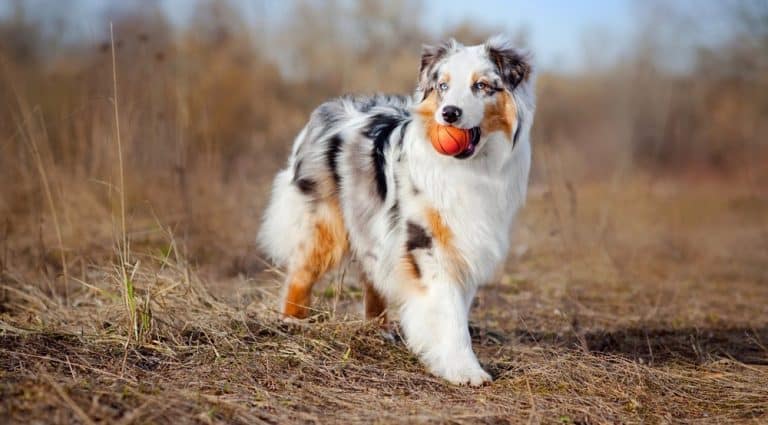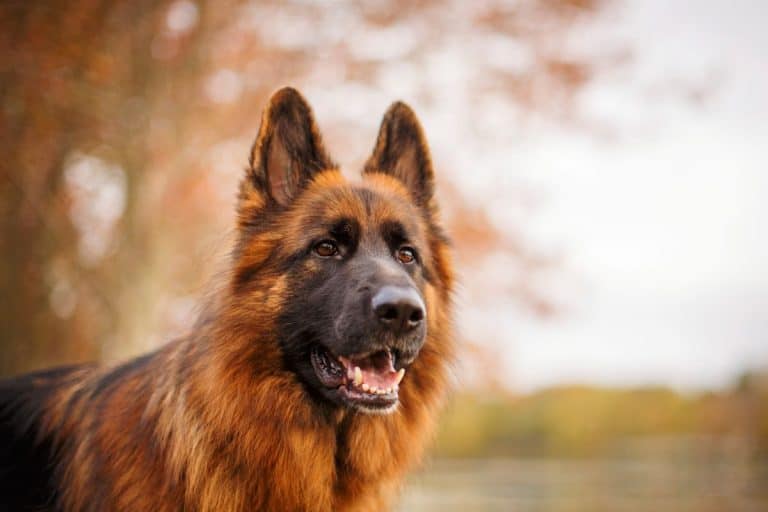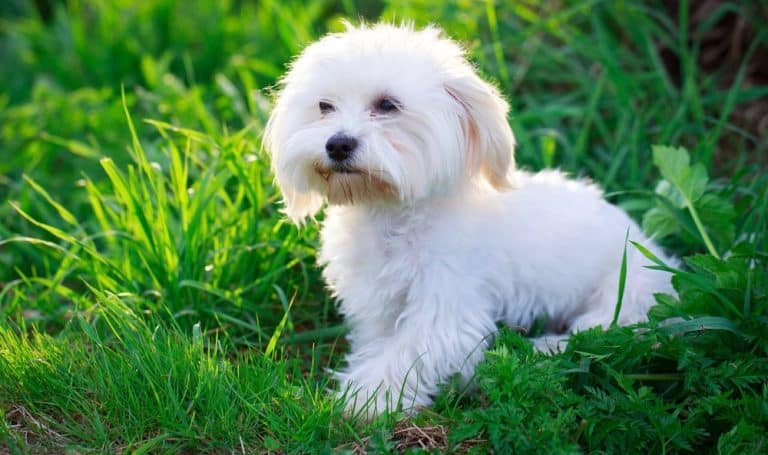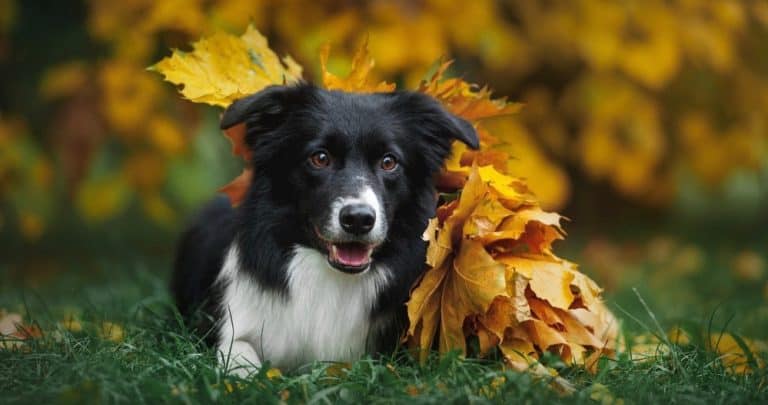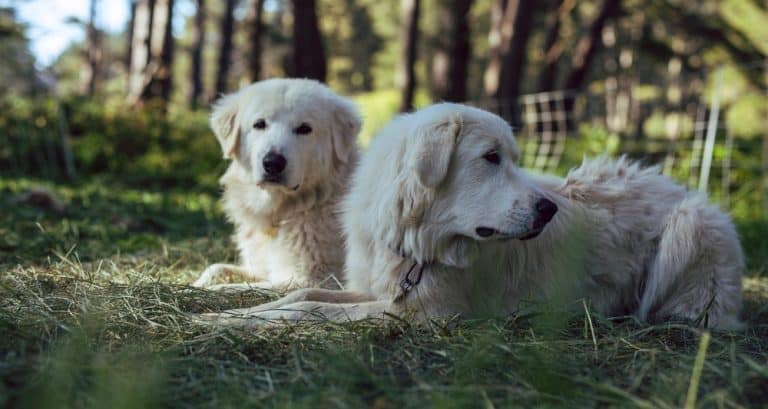Do Pitbulls Shed – Pitbull Shedding
Pitbulls are mostly known for their playful and lovable traits and they have a huge capacity for joy compared to many other dog breeds.
Are you thinking about adopting or buying a Pitbull puppy? First, you need to understand their shedding habits.
Pitbulls are the most commonly adopted puppies from rescue shelters and most owners are surprised that they shed and leave a good amount of fur behind.
So, do Pitbulls shed? The answer is yes. While Pitbulls have single coats, they shed regularly compared to other dogs with single coats. The good news is that they have short coats, hence it is easy to maintain.
This article will give you all the information that you need to know about Pitbull shedding, the shedding frequency, the causes for shedding and how you can manage it.
Do Pitbulls Shed a Lot?

It may be difficult to tell whether Pitbulls shed or not because of their short, sleek and fine coats. Do Pitbulls shed a lot? Yes, they do shed to a certain extent like any other dog breed but not too much.
Their shedding is between minimal and moderate because they have a single coat. Most owners can testify that fur loss is at its peak during the shedding season.
The main reason for pet owners not noticing the presence of Pitbull’s fur in their home is because their surfaces may not make the dog’s fur visible to them. For example, if your Pitbull has a dark coat, their fur may not be seen on dark surfaces but can be seen on white clothes or carpets.
Pitbull Shedding Frequency
Pitbulls are single-coated dogs hence they shed consistently throughout the year. They do not have the ‘blown-coat’ experience that dogs with double coats have.
Since there is no undercoat to be shed, the amount of fur you will be dealing with will be the same throughout the year.
Therefore, it is a matter of how much they shed. This is because some Pitbulls can shed more than others depending on the coat colour.
Fur from white Pitbulls appears more than darker colours. Unless you have light tile, furniture or carpets, it is easy to spot white fur than dark fur.
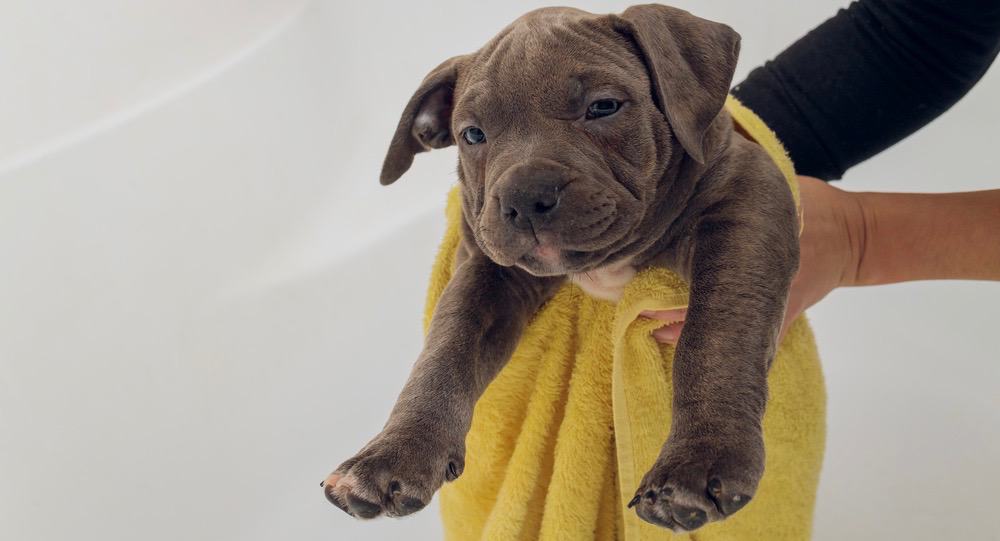
The Main Reasons Pitbulls Shed
Does your Pitbull shed too much? Even though Pitbulls do not shed more or less because of seasonality, other things can affect the frequency and amount of fur you see in your home.
Some of the things may need to be checked by a veterinarian. The following are a few reasons that can make your Pitbull shed:
- Routine change: changing the routine of your dog can increase their stress levels leading to more shedding.
- Stress: stress caused by anxiety and other things can lead to excessive shedding of your Pitbull.
- Allergies: if your Pitbull is allergic to certain nutritional product or grass, they may lose their fur.
- Nutrition: changing the diet for your dog can lead to allergic reactions which can cause more shedding.
- Skin Conditions: since Pitbulls have sensitive skin, any skin problems that affect them may lead to fur loss.
- Bathing: some Pitbulls may not do well with certain shampoos and bathing products. This can cause more shedding.
- Mites: if your Pitbull has mites and other parasites, they may lose their fur.
If you have had some stress in your home or changed your dog’s routine, it is common to see extra fur laying around the house. However, if you think that your puppy is shedding more than normal, visit the vet to have a proper diagnosis.
Your vet can rule out any serious health conditions that may be causing the shedding and put your mind at ease.
How to Manage Your Pitbull Shedding
The following ways will help you manage the shedding of your Pitbull:
Brushing
Most dog owners neglect to brush their puppies. It is quite easy to brush a Pitbull because of their short coat compared to Siberian Husk who has long hair and shed more.
You only need to brush your Pitbull a few times a week. There is no need to buy a de-shedding tool for your Pitbull since you can use a pin-brush that is high in quality.
However, if your Pitbull sheds more than normal, you can use a de-shedding tool if your vet has ruled out any medical conditions and your puppy just sheds more compared to others.
Shampoo and Bathing
Since Pitbulls have sensitive skin, you should avoid using ‘average’ commercially graded shampoo when bathing them. It is recommended to use a shampoo specifically handpicked for Pitbulls or oatmeal shampoo.
Using the right shampoo will automatically rule it out as a reason for excessive shedding. Every dog has a different tolerance for bathing frequency.
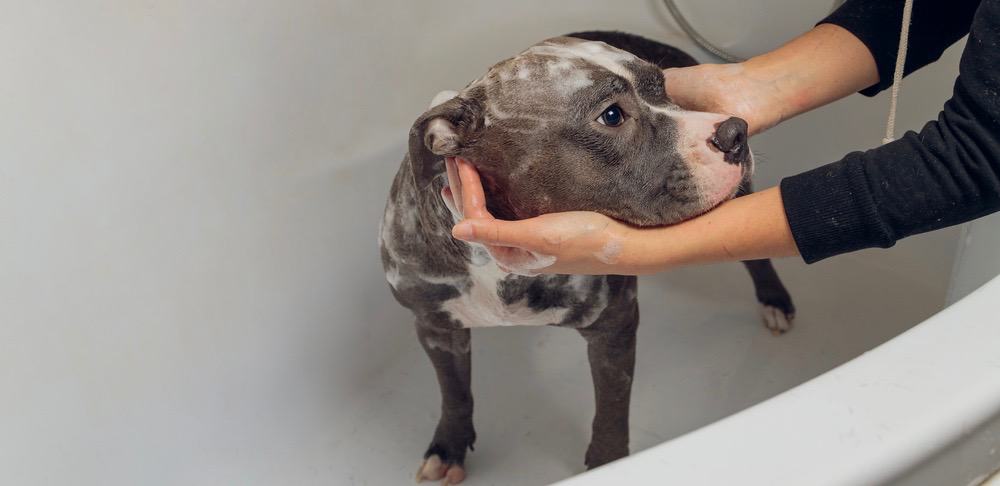
Some Pitbulls can deal with regular bathing while others cannot handle having their natural oils stripped regularly. It is recommended that you bathe your puppy once a month but some Pitbulls can deal with bathing twice a month. This also depends on whether your dog spends more time indoors or outdoors.
Diet
Diet is important in maintaining the amount of fur that your puppy sheds. You should feed your Pitbull food that supports their coat and is of high quality.
If you do not spend much on your dog’s food, they may be deficient in necessary nutrients. This can affect their coat and shedding frequency.
It is recommended that you feed your Pitbull dry kibble of high quality and other ingredients such as sweet potatoes and oats. They are both high in nutrient content and maintains the amount of fur that your Pitbull sheds throughout the year.
Supplements
Adding supplements to your Pitbull’s food can be great for their coat by minimizing shedding and fur loss. There are various options, but the first step is to use a fish oil supplement.
Besides being included in the high-quality dry dog food, omega fatty acids can also be added to your dog’s regular diet in form of supplements.
You can find fish oil, skin and coat supplements in both liquid and chewable format. If your Pitbull is a picky eater, adding fish oil to their food can make their mealtime more enticing.
Pitbull Coats
Pitbulls have single and shorter coats. This means that their undercoat is not layered. Dogs with double coat shed more than dogs with single coat such as Pitbull.
Since their fur is coarse and short, they do not have much fur compared to other dogs with single coats. Therefore, the amount of fur left around your house will be the same all year round.
Pitbulls come in different types of coat colours with the most common ones being brindle coats, Blue Nose Pitbull, red coats, merle coats, chocolate, white and black coats. There are other Pitbulls with a spotted coat and they are commonly referred to as ‘Moo Moo’.
What Is The Difference Between Shedding and Fur Loss?
Shedding happens when your dog loses damaged or dead fur to create room for healthy and new fur to grow. The level of shedding for your puppy depends on certain factors including pregnancy status and general health.
Medically, fur loss is also referred to as alopecia. It can be disconcerting to see your Pitbull lose their fur. The best way to deal with fur loss is to take your puppy to the vet to identify the root cause and develop a treatment plan. The main causes of fur loss include allergies, infestation with parasites, Cushing’s disease, genetics and pressure sores.
Do Spayed and Neutered Pitbulls Shed Less?
Most dogs including Pitbulls, both male and female, frequently shed after they have been spayed or neutered. However, some may shed less after undergoing these procedures. It is important to keep track of when your puppy sheds more fur than normal.
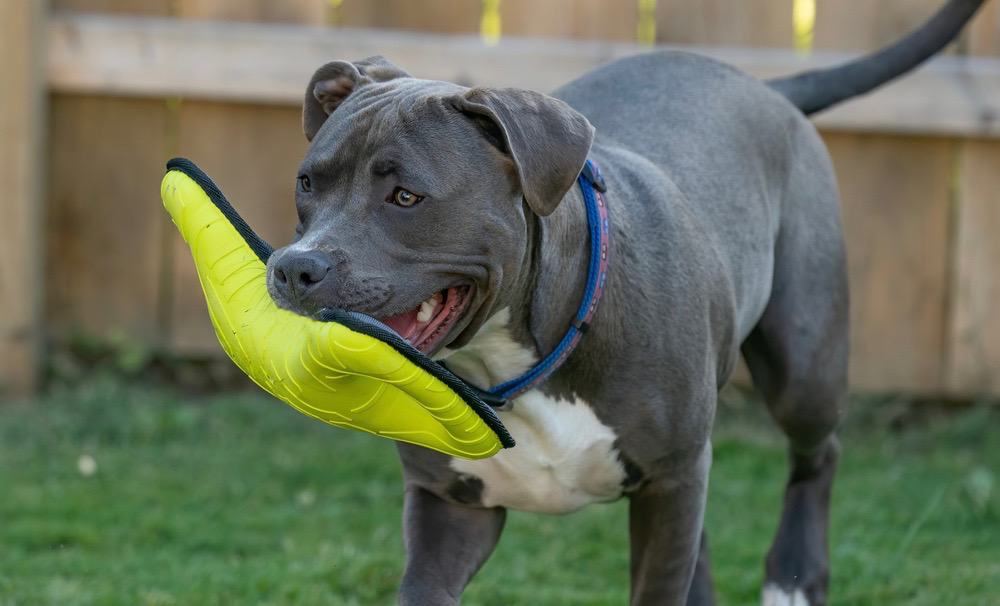
If you notice that your puppy sheds more fur to a point of losing their coat after they have been neutered or spayed, take them to the vet for examination as there could be an underlying condition causing the shedding.
Do Pitbull Puppies Shed More Than Adult Dogs?
You may be wondering whether your Pitbull will shed more fur when they grow older. Generally, older dogs shed more compared to puppies because they are big.
You should expect your Pitbull puppy to shed regularly, and they will completely shed their puppy coat at around the age of 4 and 7 months. It may take longer for Pitbulls because they are single-coated.
As your puppy grows, they become bigger and naturally will shed more hair. You will start noticing more hair around the house.
Are Pitbulls Hypoallergenic?
Pitbulls are not considered hypoallergenic but they are not the worst breed for allergies. Typically, Pitbulls shed less compared to other breeds. And there can be harmful dander with any departing hair.
Pitbulls have dander on their fur and during petting sessions, it can latch on to owners causing allergic reactions.
Apart from dander, some people are allergic to dog saliva and Pitbulls come with a lot of slobber. Your Pitbull’s saliva can get attached to household items and if it is not cleaned, it would dry and become airborne.
Also, the sweat and urine of a Pitbull can lead to allergic reactions. Therefore, lounging spaces and beds can be breeding grounds for harmful allergens.
Do Pitbulls Smell?
Pitbulls have high energy and they will roll, romp and squeeze through spaces including the dirty ones. Since you should not bathe your dog every day, they will soon accumulate stink causing them to smell.
If the smell is caused by your dog playing with mud and dirty surfaces, you can fix this by bathing them using the best shampoos formulated for Pitbulls.
However, if the smell does not go away after bathing, there could be an underlying condition or allergic reactions triggering the smell. Take your puppy to the vet for diagnosis because if the smell is too bad, it may be an indication that their kidneys are affected.
Pitbull Shedding FAQs

The following are the frequently asked questions about Pitbulls:
Do Pitbulls Shed More Than Rottweilers?
Generally, Pitbulls shed less fur compared to Rottweilers, even though they both have short coats. This is because Rottweilers have dense fur compared to Pitbulls, hence have more fur to shed. This means that grooming a Rottweiler takes more effort than grooming a Pitbull.
However, if you notice that your Pitbull is shedding more than normal, you should take them to the vet for examination to rule out any medical conditions.
What Time of The Year Do They Shed the Most?
The amount of hair that a dog sheds corresponds to the rising and setting of the sun. During winter, the days are much shorter since the sun sets earlier.
During this period, your puppy will shed their summer coat and grow a slightly longer and thicker coat as a preparation for winter.
The opposite happens during summer. Pitbull’s bodies are tuned with nature and their coat changes so that they are protected from the sun and other environmental elements.
How Bad Is Pitbull Shedding to Deal With?
Pitbulls shed less fur throughout the year compared to other breeds. This means that it is easy to deal with the shedding through brushing, grooming and a healthy diet.
However, excessive shedding can be a cause for alarm, and you need to take your Pitbull to the vet.
Other ways to deal with shedding include covering your furniture, having multiple hint rollers, watching out for fleas and ticks and administering medication when need be.
How to Brush Your Pitbull At Home?
Brushing and combing your Pitbull regularly helps keep their skin and coat looking good and healthy. To get the full benefits of brushing, you need to brush the coat and all the fur.
The most common way of brushing your puppy is backward against the direction of the fur and then brush it back. Brushing this way removes and loosen dead fur as well as stimulate your dog’s skin to produce natural oils.
How to Prevent Your Furniture from Dog Hair?
Protecting furniture from dog hair has been a struggle for many owners, but thankfully there are many furniture covers specifically designed for pets. To protect the sofas, buy a cover that protects the seating area or the entire space from the dog’s hair, depending on your needs.
The seat covers can be removed when guests arrive, and you can put them back afterwards to protect your sofa from dog nails and hair.
Final Words
Hopefully, this article has given you what you need to know about Pitbull shedding to help you care for your dog more.
However, if in any case, your Pitbull sheds more fur than normal and you cannot manage it at home, book an appointment with the vet for diagnosis. This is because they may be having a medical condition that is causing excessive shedding.

